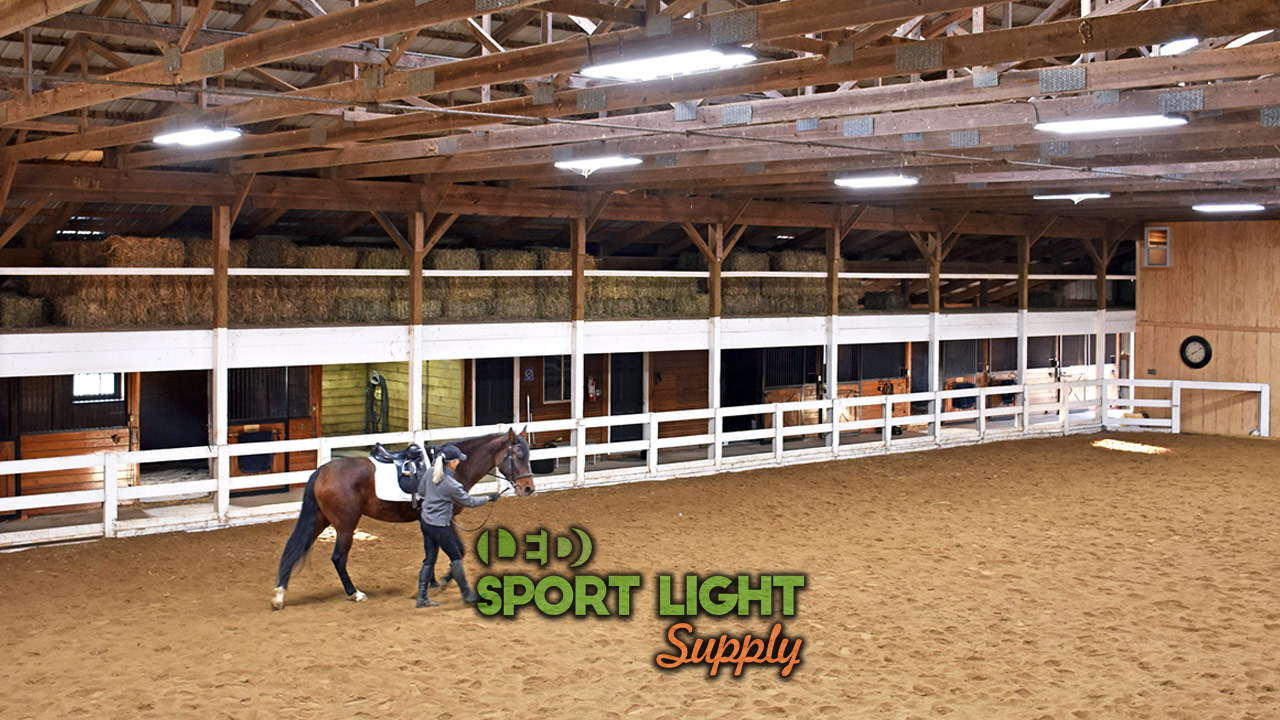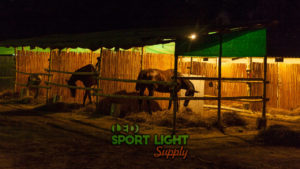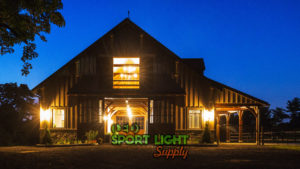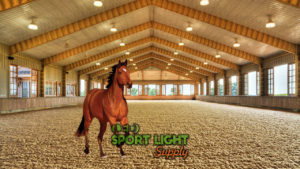What determines the cost of horse arena lighting?
1. Riding arena size
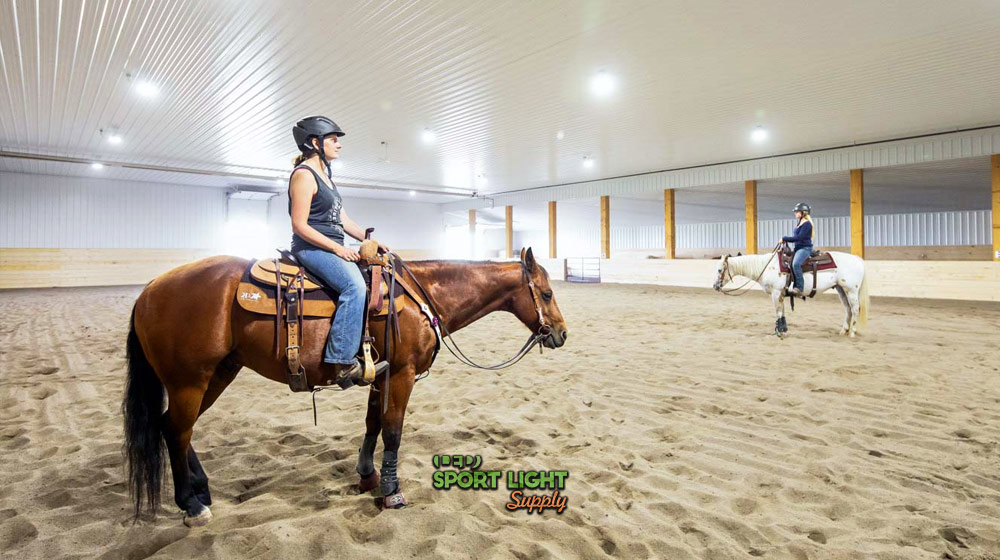
Larger arenas will need higher lumen output, resulting in a lighting price that would be more expensive. This is merely a natural assumption when lighting-up a large area. However, the advantages of LED lights make these running costs much lower than other traditional forms of lights. The cost comparison is more of a cost-savings whenever LED lighting is employed since there are so many energy-saving benefits.
Not to forget that running costs and lamp replacement is also a continuing struggle with other light fixtures. Needless to say, large equestrian arena owners need to weigh-out the cost factors carefully.
2. Level of competition
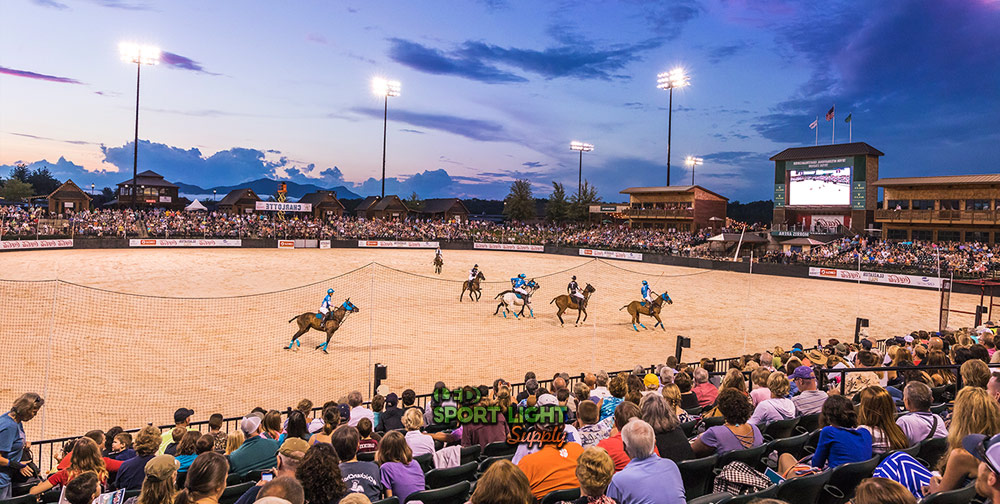
Another excellent question to ask yourself is the kind of competition that your arena is intended to be used for. There will always be horse training arenas, but many owners will want to host their own exhibitions. When it comes time to light your venue for competition lighting, Lux and light uniformity need to be established. Are you looking to have semi-professional or professional equestrian horse events?
The differences in lighting requirements will also determine the outcome for the level of lighting that’s best recommended. Anything less will have a huge impact on how professional or cheap your venue may appear.
3. Lux and lighting uniformity requirement
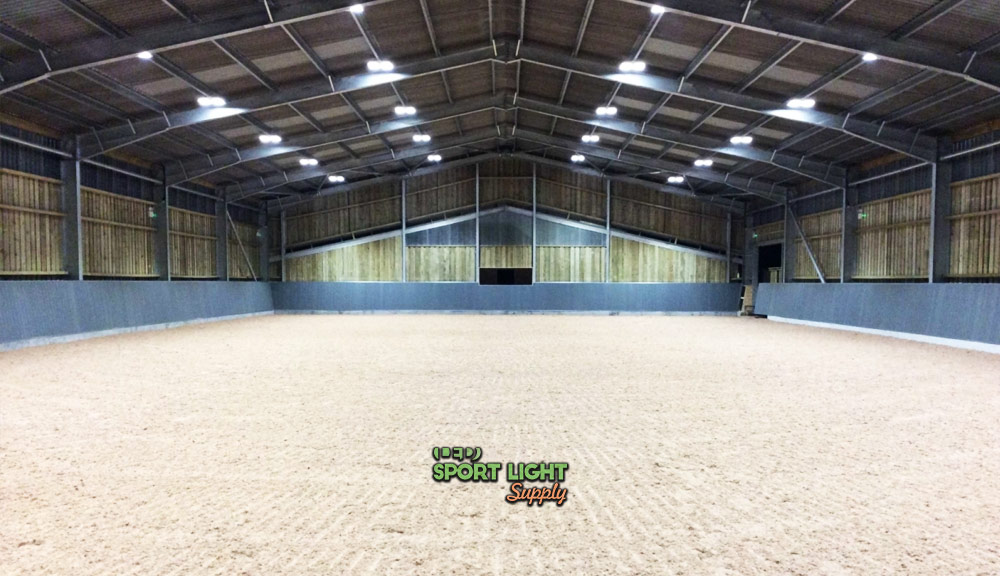
It’s becoming more common that a standard for Lux and light uniformity is setting the stage for equine events. Horse arena lighting is equally important for both the riders and horses. Now that many equine events are intended for public viewing, spectators and television cameras must have adequate light levels too. For the level of competition, judges must have the ability to study a horse’s performance without visual hindering.
This will further allow competing horses to show-off their jumping and dressage skills under optimal lighting conditions. This applies even if the arena is meant for indoor or outdoor usage.
4. Light pole height
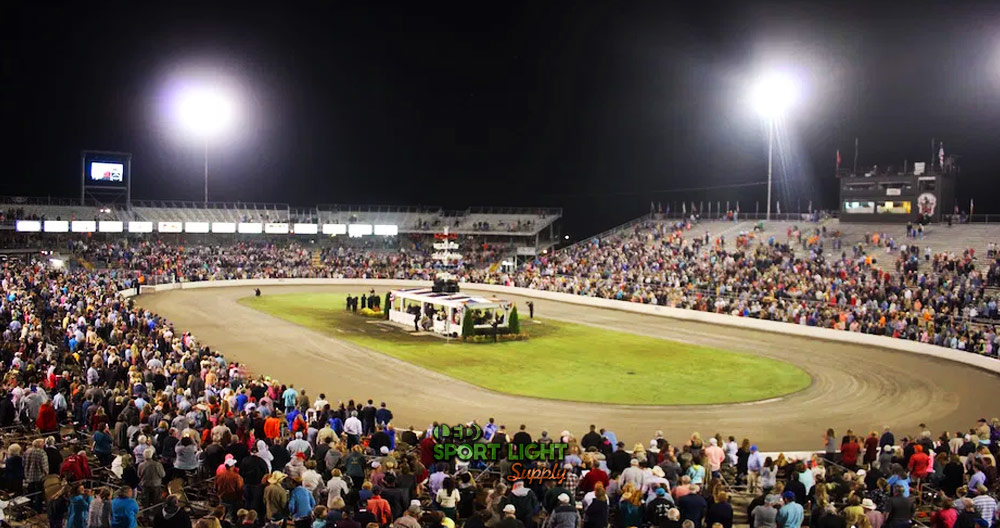
When we talk about light pole height, these are poles that are meant for outdoor light poles only. The height is determined by the overall size of an outdoor rodeo arena, roping arena, or equine training area. The combined square footage and the shape of the arena will establish how many lumens are needed. After that, it’s a matter of determining the pole height needed to provide light uniformity.
Other factors such as light loss need to be countered when the distance from the arena is measured. The correct pole height based on the size of the outdoor arena will always combine these issues.
5. Light pole layout
Getting the right number of light poles installed for an outdoor horse arena is also important. The standard is often 4 light poles placed at appropriate corner areas, but not limited to additional side lighting. The overall size of a horse arena does allow owners with extra options for more than 4 light poles. The larger the outdoor jumping or dressage arenas may be, will call for taller light poles.
Smaller venues will allow shorter poles appropriate to the total square feet of coverage needed. There is also the adjustment for light loss added so that light uniformity isn’t compromised.
6. Ceiling height
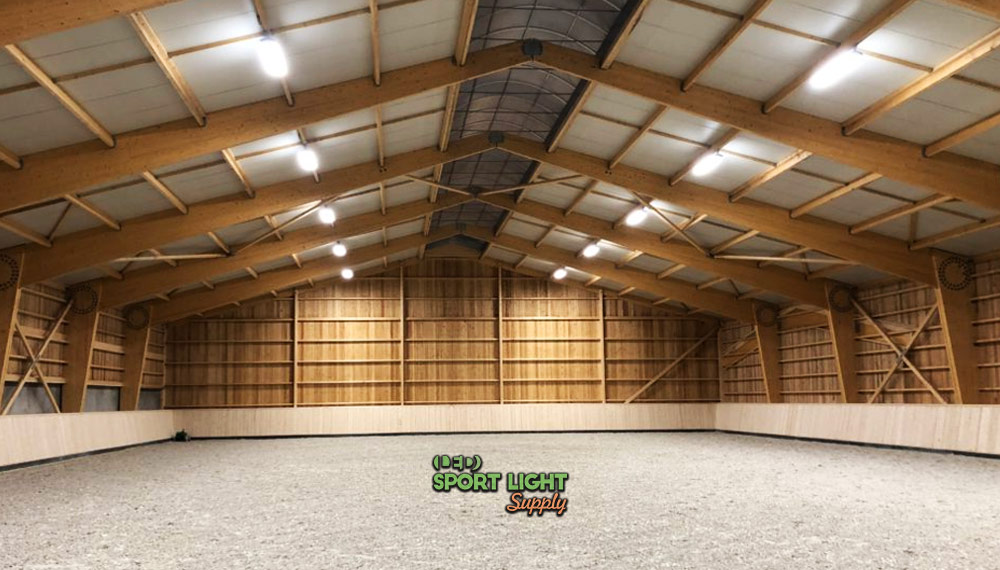
Now that we’re talking about indoor facilities for riding arenas, we must consider that a higher ceiling means more light loss. Very tall buildings meant for hosting rodeo arena or roping arena events may not have the same kind of equestrian lighting required. This means that any added lights for equine events need to be adjusted for the added ceiling height differences.
This includes the beam angle that lights are projecting. Shorter and smaller beam angles are needed so that light that expands downward isn’t wasted. An indoor horse jumping arena will have an exact light uniformity if planned out in advance.
7. Light source
You may have heard that LED has a higher initial cost but lasts longer over the many years they are designed to last. Metal halide or HPS is indeed cheaper, but these lights don’t last nearly as long. The other downside to MH and HPS is the ongoing cost to keep them running 100% of the time. The filaments don’t last nearly as long and burn out much faster. This extra cost goes along with the excessive Wattage they use as well.
It’s because of the running costs of filament-based lamps, that many equine arena owners are more open to cost-savings. With LED light fixtures, this is energy-efficient horse arena lighting that lasts up to 150,000 hours or more.
8. Lamp origin
Have you noticed how much more expensive are light fixtures are manufactured in the US? This is always because of high labor and material costs. It’s hard for some people to understand that US companies need to import their products to remain competitive. That doesn’t mean the quality is any less important, depending on how a product is designed. Thousands of US companies outsource their manufacturing to keep labor costs down.
All of our horse arena lighting products have specific parts that are meant to last. Because of this, it’s why we stand by our warranty to ensure higher quality service.
9. Outdoor Vs indoor
Outside it’s just too hard to control the effects of daily weather. So because of this, outdoor fixtures need special components, such as lighting protection from the elements. As a result, the lamp cost will be higher than using high bay lights for indoor arenas. The fixtures that go outside have to resist things like rain, moisture, and different levels of water exposure. We stick to the IP ratings that have three different levels.
IP 65, 66, and 67 are all protected from water to varying degrees. The higher the number gives you an idea of how much more protection there is. IP67 is about the most complete you can get for very and continual wet and rainy weather.
How much do horse arena lights cost?
1. Recreational
For all recreational horse arenas, we recommend 200 Lux. To simplify this illustration, we need to calculate the light cost per 100 square meters, or 1000 square feet. Here is how it works mathematically. The total Lumens required equals 200 Lux multiplied by the square meter count. Then it is further multiplied by 1.2, so that light loss is estimated further. So you have 200 x 1000 x 1.2 = 24,000 Lumens that are needed.
Wattage is then calculated by dividing 24,000 by 150 Lumens per Watt. This gives you a total of 160 watts based on the total Lumen count. Essentially this means that a horse arena lighting costs can be evaluated. So you multiply 160 watts by $0.6 to $1.6 which will equal to $96 to $256 to operate the wattage required.
2. Top-level competition
a) Dressage
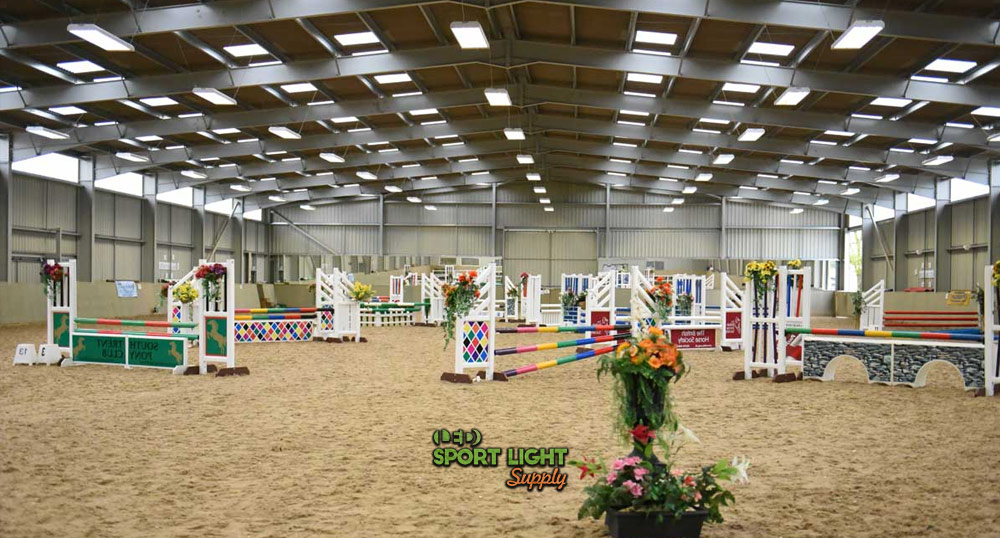
The light for dressage requires that the Lux level is 500 Lux. It will differ from show jumping since horses and riders need adequate lighting to navigate these hurdles. For this reason, the amount of lighting will need to be adjusted to the correct Lux level beforehand. This can be done using a light meter that reads Lux. Lights for the top-level competitions need to be set on a dimmer so this light level is corrected.
When show jumping takes place the Lux level is then increased to the correct level needed. Different equestrian events will all follow these lighting specs for horse exhibition light levels.
b) Show jumping
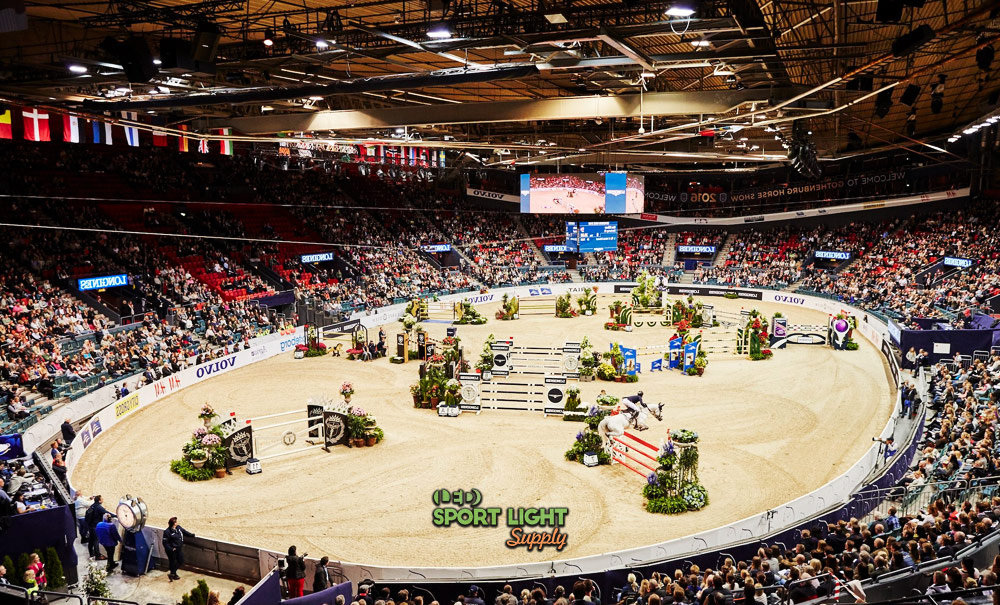
This event has a higher light rating intended for 700 Lux. To estimate the Lumens needed you to take 700 Lux and multiply it by 100 square meters. Then the light loss is also added into this number with 1.2% multiplied. This will be 700 x 100 x 1.2 = 84,000 Lumens. Then the wattage is estimated by dividing 84,000 by 150 equaling a total of 560 watts needed. After estimating the total wattage cost, this works out to 560 x $0.6 to $1.6 as an electrical variance.
This will result in a cheap cost range between $336 to $896 to run the total amount of 84,000 Lumens.
3. Televised equestrian events
On all televised events the amount of Lux is increased to 1000 Lux. This is so spectators and TV cameras can get the clearest images possible. Understandably, these light levels are very high but are also adjusted for CRI levels. This allows the lighting to not appear overexposed to the horses and riders whatsoever. This makes it easier for those who are viewing the horse events to see easier from further distances.
Those who are closer, including the judges, will have excellent viewing ability without compromising their vision either.
Power consumption and running costs of LED horse arena lighting
Now the previous estimates for wattage used don’t tell you how wattage is spent. Here is some further helpful information. A typical horse arena measures 80′ by 200′ giving you a total of 16,000 square feet (24 x 60 meters). This is further defined as 1500 square meters. The Lumens needed for this arena: 200 Lux x 1500 sq. meter x 1.2 equals 360,000 Lumens. Now as far as power consumption, we divide 360,000 by 150 equaling 2400 watts.
If you were using halogen, the Wattage number would be 10x higher! So the total running cost is 2400 watts x 6 hours a day x $0.1/1000. This accordingly translates to $1.44 per day, $43.20 per month, and $518.00 per year. Obviously, LED lighting offers huge savings costs.
Installation costs of horse arena lighting
To install horse lighting, this must be estimated using an hourly rate per fixture piece. This cost is estimated by the fixture price multiplied by $0.3-0.8. If the total size of a horse arena is 1500 square meters, the minimum lighting cost for 2400 watts is multiplied by $0.6 x $1, 440. This is only when LED lights are being installed. This will further break down to a total cost that ranges from $432.00 to $1,152.00 in total.
This is considered to be a very reasonable installation cost for the work that is being done. If the electricians are also following a lighting analysis that we can provide, the finishing adjustments will aid you further.
How to save money on horse arena lights
1. Using LED lights
Of course, there is a higher initial cost to consider for installing LED lighting. The way that LED lighting is constructed is to maximize the length of time that the light will last overall. In the long-term scheme of things, this means lower maintenance and running costs for you. As opposed to other types of filament lighting, this ongoing cost-savings is seen year after year as a result.
2. Having a good lighting design
The whole idea of LED light planning is to optimize the wattage that’s used. The lower amount of light spillage is readily seen, and better control over light loss is clearly observed. We provide a lighting analysis using a special 3D program that duplicates your horse arena. This allows us to plan a lighting diagram based on the size and square footage of this arena. The positioning of lights is configured, giving the highest degree of light uniformity needed.
3. Shorter light poles in a horse arena
Smaller horse arenas don’t need tall light poles to provide the right illumination. Although this helps to reduce light loss, this can lower light uniformity as a result. According to a lighting analysis that’s provided, we can share solutions to reduce this problem through added sidelights that work in your favor.
4. Using solar lights
Another great solution is to consider using solar-powered LED light fixtures. This can save on the electricity cost even further but the trick is to have ample amounts of light in the daytime. Sunny locations make for better solar collection than others. But even on a cloudy day, solar panels do collect the sun’s energy. It just takes longer exposure to get a good battery charge.
5. Buying the lamps first before hiring electricians
Going to a lighting contractor or electrician to install LED lights is a two-way price street. Since they’re in a very marginal business, you might be offered a sweet deal from them for lights. You should avoid getting a full lighting package from these electrical contractors because their profit margin will be marked-up. Our services allow you to get a lighting design and lamps first, so later you can hire electricians to install the lighting with less hassle involved.
This way you save on hidden expense costs that should stay in your pocket.
Our conclusion
I hope this gives you a clear idea about the savings that are involved with using LED horse arena lighting. Switching to a cheap and cost-effective solution is how you can manage horse expositions at your private arena. If you have any questions that need further explanation, feel free to contact us with any questions.

